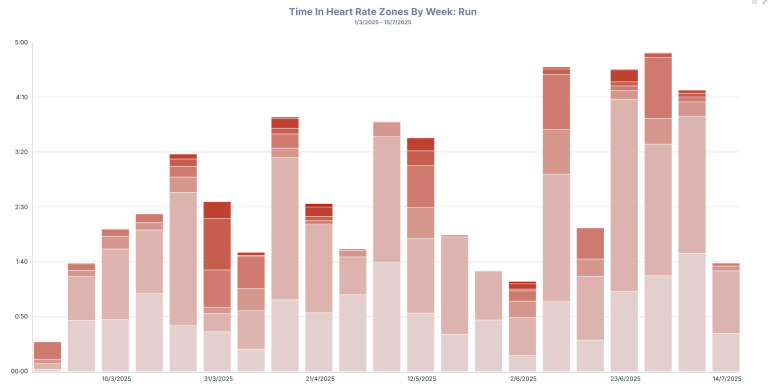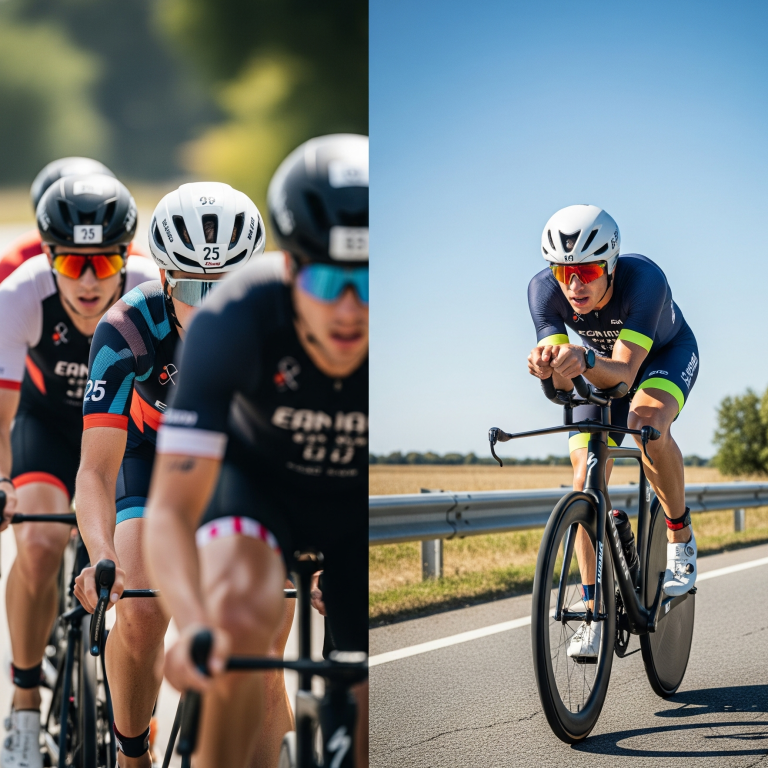You Know What Zone 2 Is, But It Doesn’t Work For You.
If you’re a marathon runner, you have undoubtedly heard about Zone 2 training. It’s presented as the foundation of elite performance, the secret to unlocking endless endurance. You’ve followed the advice, slowed your pace, and put in the hours, listening to every podcast known to man twice over. (You might also want to check out our ultimate marathon training guide!)
But for many, the results don’t match the effort. You feel like you’re in a perpetual plateau, where your race times have stagnated despite your dedication. The truth is, many runners who think they are training in Zone 2 are missing the precise physiological target. The problem isn’t the principle of running slow; it’s the lack of precision.

My Own Initial Scepticism
I understand this disconnect firsthand. My own athletic background is in sprint swimming, a sport where every effort was about going so hard you question your life choices for 50 meters straight. Initially the concept of intentionally training at a low effort was completely foreign to me, and I was skeptical that it could lead to any real performance gains… until I had a deep dive into the science.
What I discovered was that Zone 2 isn’t just ‘junk miles’, it’s where the deep, foundational magic happens. The science is compelling: this low-intensity effort is the primary stimulus for building a dense network of powerful mitochondria, the energy factories in our cells. It fundamentally rewires your metabolism to become more efficient at burning fat for fuel, preserving your limited carb stores for when you need them most. It even improves your body’s ability to clear and reuse lactate as a high-octane fuel source, turning a supposed waste product into a performance advantage. Understanding this cellular-level engineering- that we are literally building a better engine, not just logging slow miles, transformed my coaching philosophy. It became the ‘why’ behind the ‘go slow to get fast’ paradox.
Even now, this is a challenge I frequently see with the athletes I coach. One of my recent clients, Laura, is a perfect example. She was dedicated but incredibly frustrated, having plateaued just above the two-hour mark for her half marathon. Her training log looked fine in terms of volume and makeup, but her data told the real story: her “easy” runs were consistently a little too spicy, creeping out of her true aerobic zone.
I had her slow down. A lot. While she was skeptical for the first few weeks, she trusted the process. The result? She didn’t just break her goal; she smashed it with a 1:56 finish. It was the ultimate “I told you so” moment (but in the nicest way possible).
So, why is this precision so critical? Because Zone 2 training is a targeted stimulus designed to re-engineer your body from the inside out.
When you train correctly in Zone 2, you:
- Build Better Cellular Engines: This training signals your body to build more and better mitochondria, the powerhouses in your cells. More powerhouses = more power. It’s beautiful, simple math, and it’s the only time we’ll let running and ‘simple math’ exist in the same sentence.
- Become a Fat-Burning Machine: Think of your body having two fuel tanks: a small, high-octane one for carbs, and a huge, slow-burning one for fat. Zone 2 training teaches your body to rely on the giant fat tank, saving the premium fuel for when you need to drop the hammer.
- Get Better at Recycling: Contrary to old myths that made it the villain of every 80s sports movie, lactate is actually a high-value fuel, not a waste product. Your body learns to treat it less like garbage and more like a high-end energy gel it produced itself.
The Zone 2 Trap
If the benefits are so significant, why do so many runners get it wrong? Because they rely on some very sketchy / perception based methods to find their zones. The most common culprits are:
- Age-Based Formulas (220−age): This formula is about as personalized as a newspaper horoscope. It might be accurate for someone, somewhere, but it’s probably not you. It completely ignores your actual fitness level.
- The “Talk Test”: The advice to run at a “conversational pace” is a decent start, but the lines of ‘conversational pace’ are subjective. Many fit runners perceive that they can hold a full conversation about tax law, the weather, and what they’re having for dinner, all while running well into their Zone 3. This turns your easy day into a moderately tiring one.
The Tactic: The most reliable way to stop guessing is to measure. The gold standard is lactate threshold testing. A sports scientist will have you run on a treadmill, taking tiny blood samples to pinpoint your First Lactate Threshold (LT1); the precise ceiling of your Zone 2. It replaces flawed guesswork with your unique physiology.

Putting It Into Practice
With your real zones in hand, you can finally structure your training with confidence. A common and highly effective starting point for structuring your training is the Pyramidal model, but it’s important to remember this isn’t a one-size-fits-all solution. The perfect blend is effective for most, but not all, and will depend on your unique physiological make-up, your specific goals, and your total training volume. There are multiple training structures you can use to periodize your training.
A general template for this model might look like this:
- ~75-80% of training time: Low-Intensity Volume. This is your foundation, comprised primarily of Zone 2 work.
- ~10-15% of training time: Marathon-Pace Work. This is your race-specific work, like tempo runs in Zone 3.
- ~5-10% of training time: High-Intensity Work. The ‘spicy stuff’ like faster intervals in Zones 4 and 5 to raise your fitness ceiling.
Personally, I require less of the spicy stuff and more low-intensity volume to get the best results. For athletes running very high volume, the low-intensity portion might even include dedicated Zone 1 recovery sessions to supplement the foundational Zone 2 work. The key is to use the data to find what works for you.
Beyond the performance data, the most compelling reason for athletes to truly embrace Zone 2 training is the significant reduction in injury risk. So many running injuries come from living in that murky, moderate “grey zone.” By committing to truly easy days, you allow for better recovery, build resilience, and foster the consistency that is the real secret ingredient to long-term improvement. I make sure that zone 1 and zone 2 training is the basis to all of our running training plans.
The key takeaway is this: precision is more important than perception. Your subjective feeling of “easy” might be fibbing to you.
Zone 2 training is a powerful tool, but its benefits are only unlocked when it’s applied correctly. Stop guessing, start training in the zones that are right for your body, and you’ll be rewarded with the performance gains you’ve been working so hard for.





